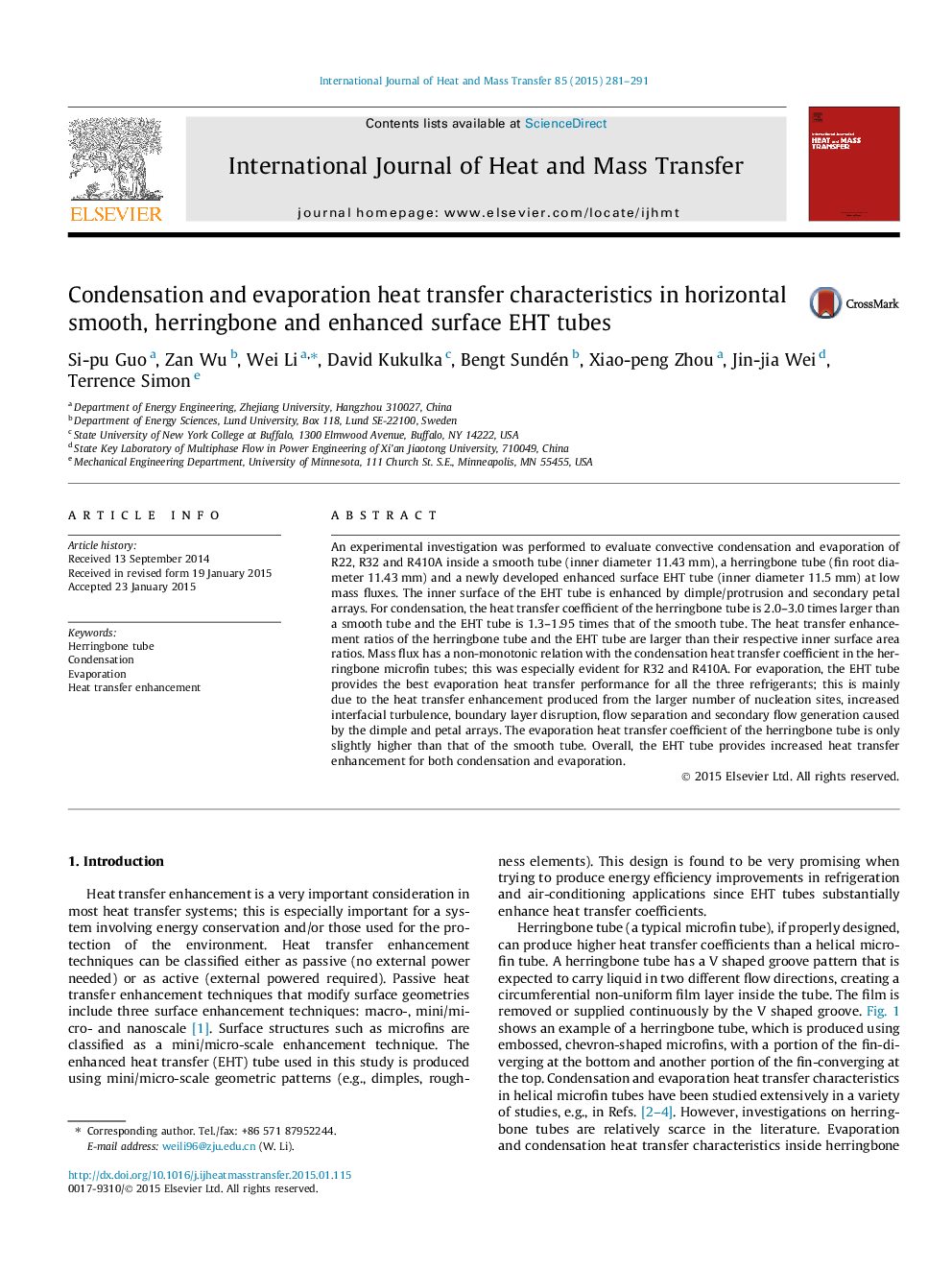| Article ID | Journal | Published Year | Pages | File Type |
|---|---|---|---|---|
| 7056666 | International Journal of Heat and Mass Transfer | 2015 | 11 Pages |
Abstract
An experimental investigation was performed to evaluate convective condensation and evaporation of R22, R32 and R410A inside a smooth tube (inner diameter 11.43Â mm), a herringbone tube (fin root diameter 11.43Â mm) and a newly developed enhanced surface EHT tube (inner diameter 11.5Â mm) at low mass fluxes. The inner surface of the EHT tube is enhanced by dimple/protrusion and secondary petal arrays. For condensation, the heat transfer coefficient of the herringbone tube is 2.0-3.0 times larger than a smooth tube and the EHT tube is 1.3-1.95 times that of the smooth tube. The heat transfer enhancement ratios of the herringbone tube and the EHT tube are larger than their respective inner surface area ratios. Mass flux has a non-monotonic relation with the condensation heat transfer coefficient in the herringbone microfin tubes; this was especially evident for R32 and R410A. For evaporation, the EHT tube provides the best evaporation heat transfer performance for all the three refrigerants; this is mainly due to the heat transfer enhancement produced from the larger number of nucleation sites, increased interfacial turbulence, boundary layer disruption, flow separation and secondary flow generation caused by the dimple and petal arrays. The evaporation heat transfer coefficient of the herringbone tube is only slightly higher than that of the smooth tube. Overall, the EHT tube provides increased heat transfer enhancement for both condensation and evaporation.
Related Topics
Physical Sciences and Engineering
Chemical Engineering
Fluid Flow and Transfer Processes
Authors
Si-pu Guo, Zan Wu, Wei Li, David Kukulka, Bengt Sundén, Xiao-peng Zhou, Jin-jia Wei, Terrence Simon,
